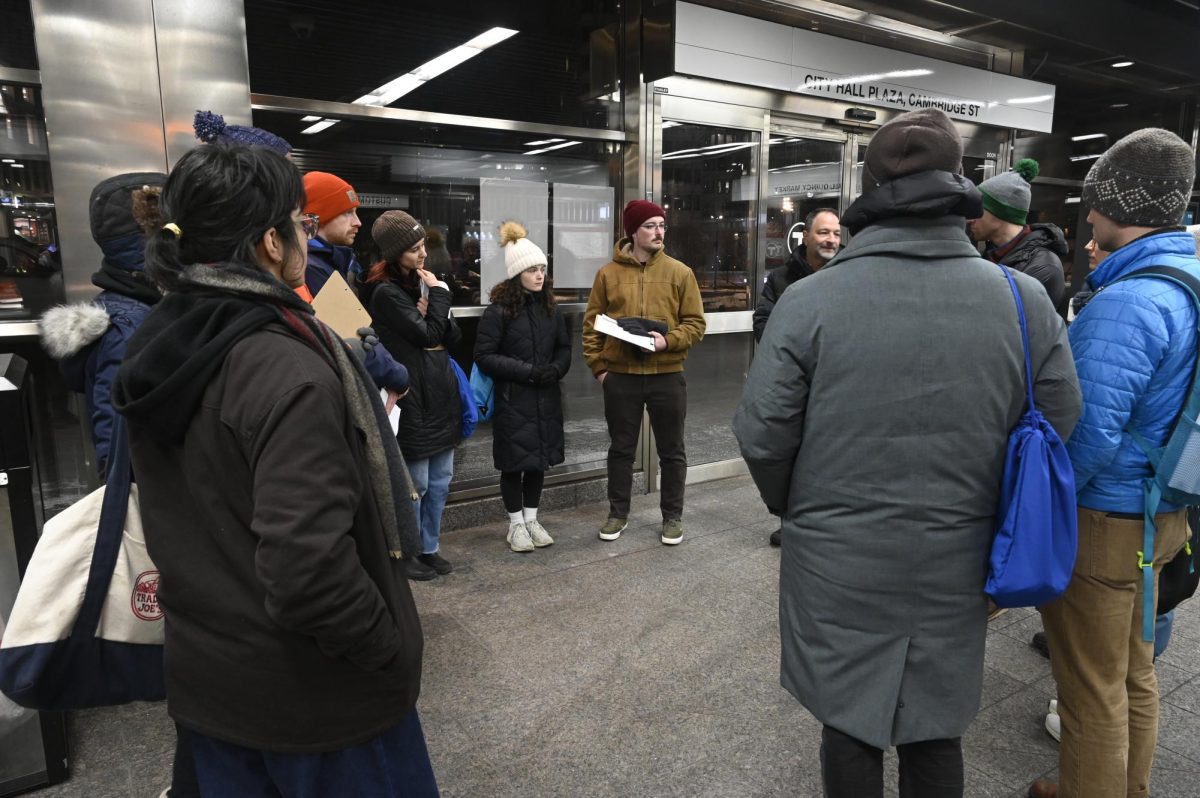Just after midnight on Jan. 30, 250 volunteers, equipped with backpacks filled with snacks, drinks, hand warmers, and flashlights, descended onto every Boston neighborhood to count all unsheltered individuals as part of the city‚Äôs 2025 Homeless Census.¬Ý¬Ý
Boston has conducted this point-in-time count for 45 years‚Äîa national requirement for communities that receive Continuum of Care funds from the U.S. Department of Housing and Urban Development (HUD).¬Ý
“Tonight, our hope is that we don’t find a lot of people, but our objective is to help people and get some data,” Larry Seaman, the CEO of FamilyAid Boston, told the group assigned to the Beacon Hill neighborhood gathered at the Government Center MBTA station ahead of their expedition.
City and federal officials, homeless services providers, and public health and safety first responders made up the total volunteer group. They canvassed 45 areas, including neighborhoods, Logan Airport, and Boston‚Äôs transit and parks systems. Out on the street, with a nighttime temperature of 20 degrees Fahrenheit,, they began by looking for individuals in places where they would be able to find warmth, such as storefronts, cars, train stations, and air grates.¬Ý
When encountering a person who was homeless, Seamans instructed volunteers to introduce themselves and explain their objective before engaging in further conversation.¬Ý
‚ÄúInteract with people in a way you‚Äôd hope to be interacted with,‚Äù he said. ‚ÄúIt is all about dignity and respect.‚Äù¬Ý

Volunteers were able to “log” people they encountered by submitting an observation of what the individual looked like and their attitude using a QR code that had been sent to them prior to the event.
If the conversation went well, they could go further and have unhoused individuals answer survey questions, which were developed by HUD and asked about ‚Äúgeneral demographics, how long folks have been homeless, how they fell into it, whether they’ve accessed services to support them, and specific information about substance abuse disorder,‚Äù according to the Senior Development Officer for the Mayor‚Äôs Office of Housing Adam Goldstein.
Employees working in City Hall tracked the data in real-time and matched up observations to ensure no person was counted more than once. Later, the survey results were analyzed and cross-checked with shelter data.
While the city works to collect this data, some Emersonians engage with Boston‚Äôs homeless community regularly, focusing on immediate, material support. Every Friday, the Boston Common Coalition for the Homeless (BCCH), a student-run mutual aid organization, hosts walking distributions or free stores to benefit nearby people in need.¬Ý
“At walking distributions, we take food, snacks, and toiletries and walk around Boston handing things out to people,” said sophomore writing, literature, and publishing student and BCCH member Mel Rivas. “At free stores, we use all of our inventory and put it out on blankets in the Common. People can just come and go to get things that they need for free.”
BCCH officially started organizing last spring, according to Rivas. The amount of wealth at Emerson was the driving force.¬Ý
‚ÄúHaving all of this excess and then going outside and seeing a man sleeping on the ground ‚Ķ it feels bad and very avoidable,‚Äù they said. ‚ÄúWe really wanted to redistribute our own wealth to the people who need it.‚Äù¬Ý
Boston‚Äôs 2024 Homeless Census revealed that the number of individuals experiencing homelessness in the city had increased by 10.6% from 2023. HUD reported that 2024 also saw the highest number of people experiencing homelessness on a single night, nationwide, since their reporting began in 2007.¬Ý
However, Boston has the eighth lowest rate of unsheltered homelessness of major U.S. cities. While 40% of the homeless population is unsheltered nationally, only 6% of homeless individuals in Boston are. The Pine Street Inn, a local shelter, had workers on call and vans available during the census count to bring people to safe shelters if they wanted to go or if volunteers found someone in active distress.
‚ÄúShelters are often posed as a solution [to homelessness],‚Äù Rivas said.‚Ä©‚ÄùThey provide invaluable service, but they are only a bandaid. They’re just a temporary solution for people who need a permanent place to stay.‚Äù

Jill Stuart, a junior creative writing student and BCCH member, said collecting this data is a good start, as the homeless population is a demographic that is often overlooked.¬Ý
‚ÄúBut this is only one step,‚Äù she said. ‚ÄúI hope that the city’s administration doesn’t just take this as a symbolic act.‚Äù
In a press release, Mayor Michelle Wu said that the census was an ‚Äúopportunity to evaluate the needs of unsheltered Bostonians and connect individuals to services‚Äù and that the data from the census is ‚Äúcrucial for the City as we act with urgency and care to make Boston a city for everyone.”
The data from the census, which will be available in the coming months, will also be used to inform Boston’s policy development and allocation of resources. Until then, groups like BCCH will continue to do work on the ground, members say.
‚ÄúIt‚Äôs become normal to see homeless people, people who are begging, people who are really poor,‚Äù Rivas said. ‚ÄúWhen you‚Äôre trying to walk to class and see people right next door who are truly struggling, it makes you wonder, ‚ÄòSurely this isn‚Äôt the only way, there has to be something we can do.‚Äô And I think that there is.‚Äù¬Ý